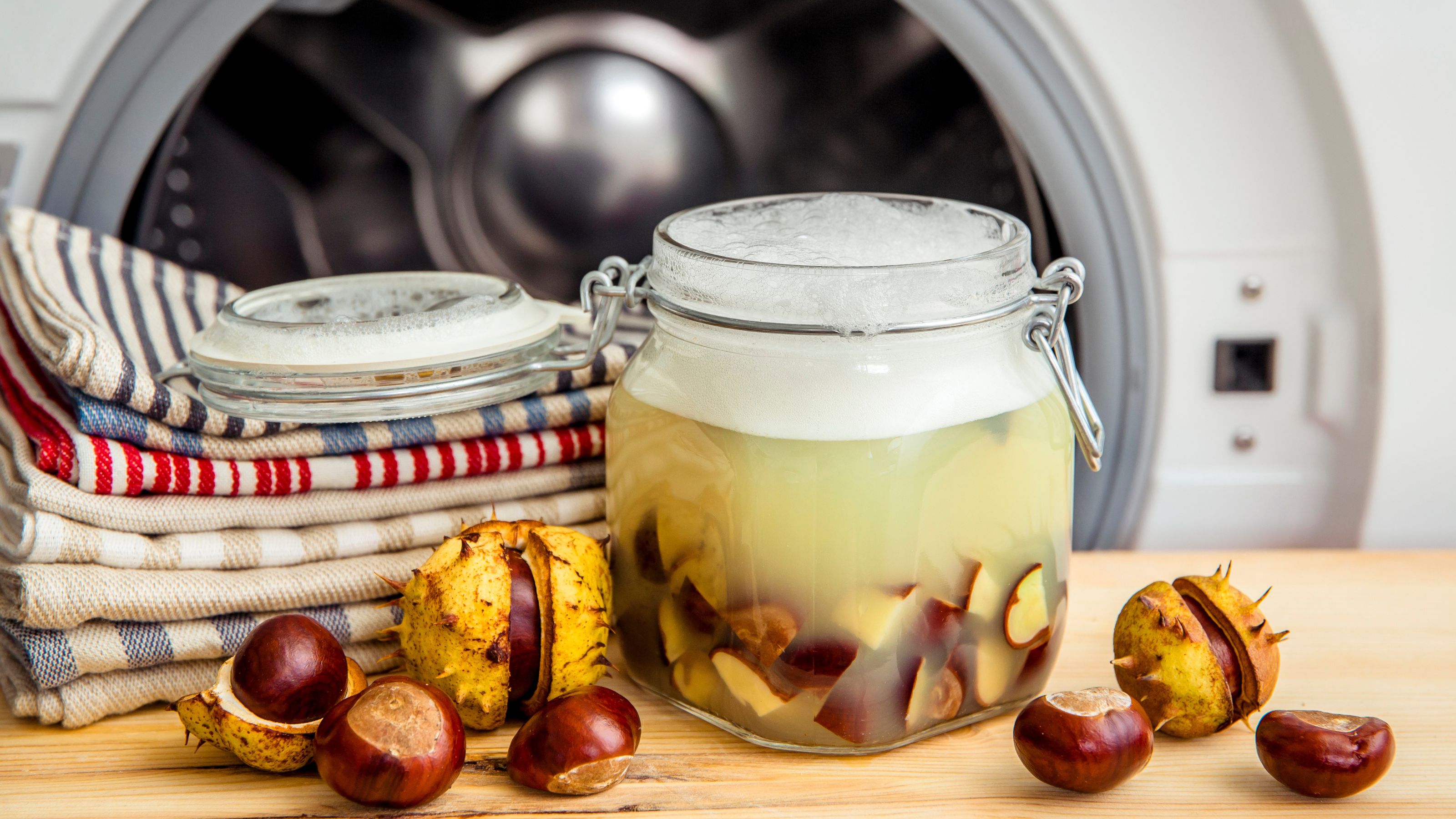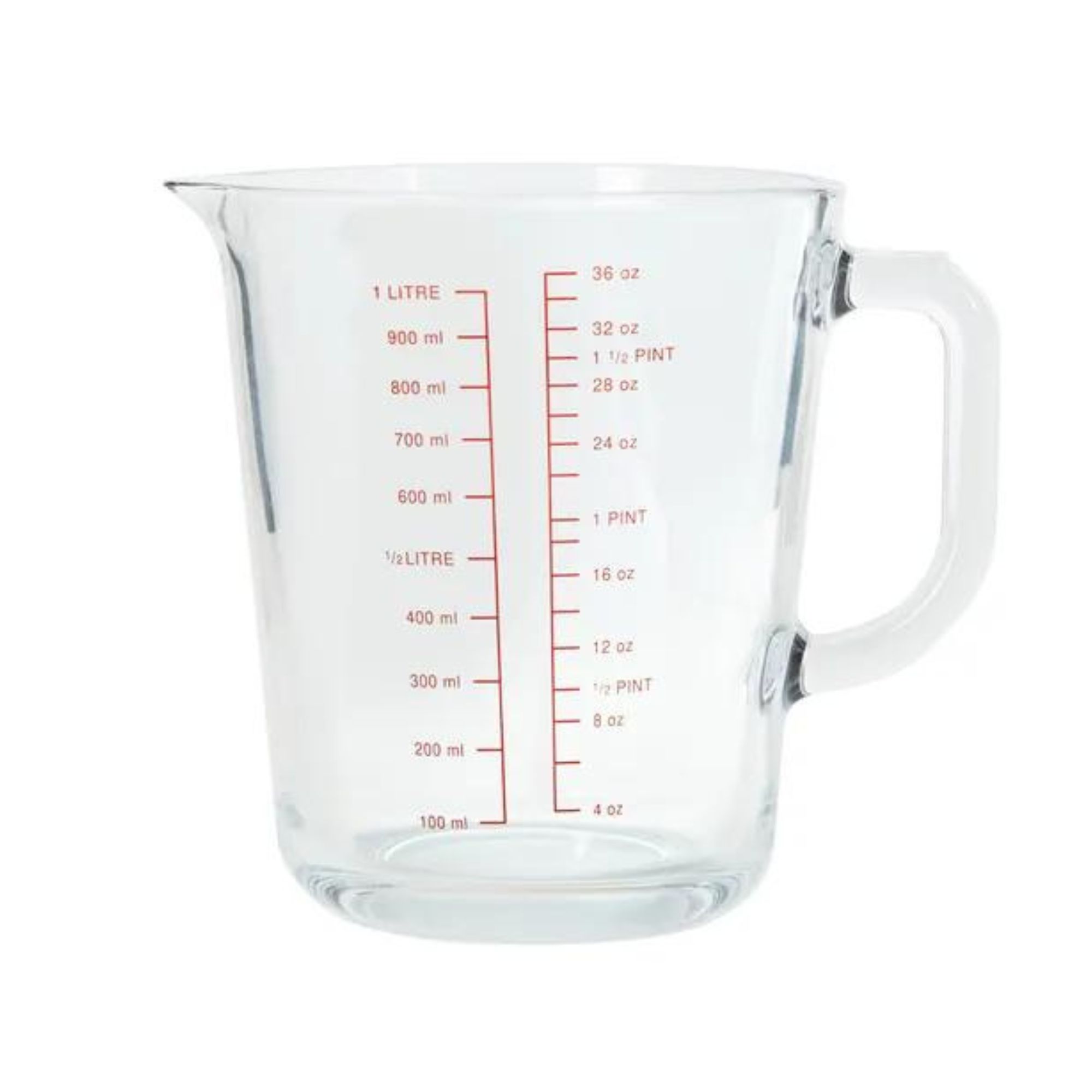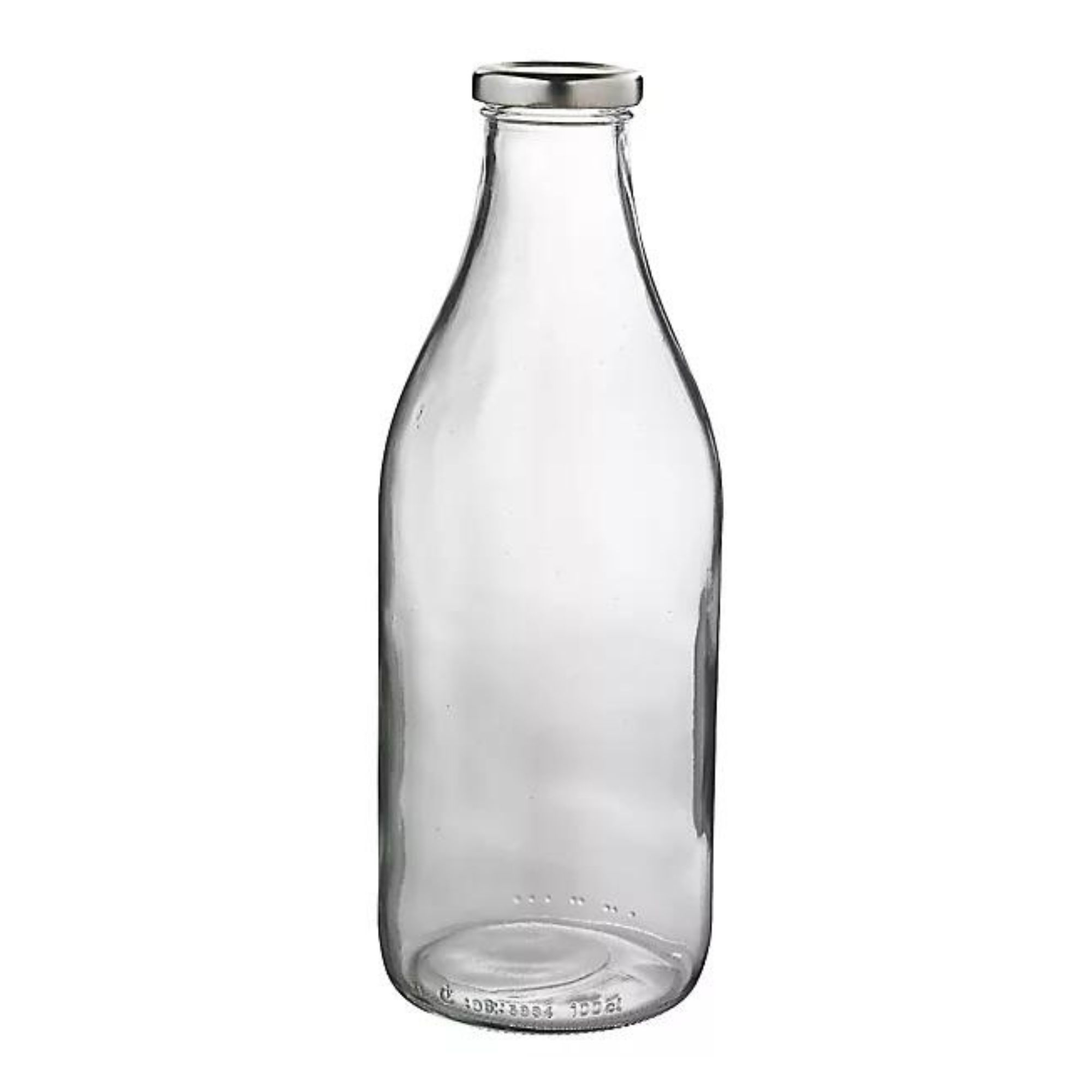How to make laundry detergent from conkers - wash your clothes for free with Nancy Birtwhistle’s natural recipe
It’s conker season! Time to make some free conker laundry detergent…


Let’s be honest; laundry detergent can be expensive. Even if you ditch big-name brands for supermarket dupes, you still spend at least £2.50 every time you need to stock up. That’s where knowing how to make conker laundry detergent – AKA Mother Nature’s free detergent - can help.
Of all of the laundry detergent alternatives out there, conkers are one of the best. Popularised by the legendary Nancy Birtwhistle (GBBO legend and natural cleaning queen), conker laundry detergent may sound bizarre, but it’s both effective and affordable. In fact, conkers contain saponins- natural surfactants that have natural soapy properties (and they even help to get rid of spiders).
The best part? Conkers are completely free! This means you can head to your local woodland during the conker season, typically between September and October, and grab as many conkers as you can carry. Then, you can make your own laundry detergent from conkers without spending a penny. Here’s how to do it.
A post shared by NANCY (@nancy.birtwhistle)
A photo posted by on
What you'll need
To make conker laundry detergent, you’ll, of course, need conkers. But you’ll also need:
Step-by-step
1. Pick and slice your conkers
In September and October in the UK, you’ll normally find spiky balls scattered on the ground around the base of horse chestnut trees. Inside these spiky casings are the saponin-filled conkers - the seeds of the horse chestnut tree.
As conkers ripen in Autumn, they’re ready to use as soon as you pick them off the ground. And according to Nancy’s conker laundry detergent recipe (which can be found in her book, Clean & Green: 101 Hints and Tips for a More Eco-Friendly Home on Amazon), you’ll need around ten conkers per litre of detergent.
Don’t limit yourself to a ten-conker forage, though. Nancy picks as many as she can, pops them in a sandwich bag, and keeps them in the freezer to use throughout the year. She also finds that they’re easier to work with and slice when frozen.
Sign up to our newsletter for style inspiration, real homes, project and garden advice and shopping know-how
And when you’re ready to slice them up, you should aim to remove the outer shell so you’re just left with the fleshy centre of the conker.

2. Soak conkers in boiling water
When you’ve removed your conker innards from their outer shell, pop them in a jug and pour around 500ml of boiling water straight from one of the best kettles over them. The water should completely cover the innards.
Then, aim to leave them soaking in the hot water for at least eight hours. However, Nancy suggests leaving them overnight if you can, as this will aid the release of the saponins.
3. Strain the solution
The next day, you should notice that the liquid has turned cloudy and that there will be a thicker layer of liquid on top of the conkers. This is your first batch of conker detergent - but you need to strain it first.
So, grab a sieve (a sieve is better than a colander for this) and pour the contents of the jug through the sieve and over a bottle. This will be the bottle you’ll store your detergent in, so make sure it has an airtight lid.
As the liquid is poured into the bottle, you should already see the soap suds appearing. But you’re not finished just yet.

4. Soak once more before blending
Although you’ll have some conker laundry detergent in your bottle at this point, you can still get a lot more out of your conkers. So, soak them in boiling hot water once more. You shouldn’t need to soak them for as long this time, and around 2-3 hours should do the trick.
This second soak will soften the conker innards so you can grab your hand blender and blend the conkers while they’re still in the water.
Blend until the conkers are completely broken down, as this will release all of the remaining saponins from the innards. Then, you’ll be left with a slightly thick cream-coloured detergent.
5. Strain and add essential oils
You still want to make your conker detergent thinner, though, which is why you should strain the contents of your jug through a sieve once more. This will separate the liquid laundry detergent from the conker pulp.
Then, you have a choice to make. You can either leave the conker laundry detergent unscented as it is or add the essential oil of your choice to the mixture. This will add a fragrance that will leave your clothes smelling fresh and clean.
You can then use your conker laundry detergent immediately, and Nancy suggests using 50ml per load (ideally in a cup placed directly into a clean washing machine drum, but you could also pop it in the drawer) and washing your clothes on a cold wash of around 20 degrees.
Nancy does warn that Mother Nature’s laundry detergent doesn’t keep very well in the freezer, though. Instead, you should keep it somewhere cool and dry, and if you do that it should last a few weeks.
And when you’re ready to make another batch, you can then grab your conkers from the freezer and repeat the process.

6. Compost the pulp
One of the many things we love about making laundry detergent from conkers is that it’s completely natural. And while you don’t use the pulp from the conkers for the final product, you can use it in other ways to benefit your life.
In fact, Nancy adds the pulp from her conkers to her compost heap when she’s finished making conker laundry detergent. As it’s natural waste, it’ll biodegrade and be used to feed the garden.
So, not only can you wash your clothes for free (aside from the cost to run a washing machine, of course), but you can also feed your garden for free by making laundry detergent from conkers. Why would you not?
FAQs
Why do conkers make good laundry detergent?
Conkers can be made into an effective laundry detergent because of the saponins inside of the seed. After all, saponin quite literally translates to ‘sapo’ in Latin, meaning ‘soap.’
These molecules are organic chemicals that can break down dirt and debris in your clothes and offer an eco-friendly alternative to laundry detergents. Plus, they can be foraged for free, saving you money in the process.
It’s important to note that saponins won’t tackle deep stains on clothes, though, so you may need to use a specific stain remover for certain items. Saponins are also toxic, so you should never eat conkers.
What month do conkers fall from trees?
In the UK, conkers typically fall from trees in September and October. They ripen on the horse chestnut trees first and then fall to the ground when they’re fully ripe. During this process, the spiky outer shell normally splits open - but this isn’t always the case.
So, if you want to make your own laundry detergent from conkers, it’s probably best to forage as many as you can during this time and then freeze them to use throughout the rest of the year.
Now you know how to make laundry detergent from conkers, will you be giving this eco-friendly laundry hack a whirl?

Lauren Bradbury has been the Content Editor for the House Manual section since January 2025 but worked with the team as a freelancer for a year and a half before that. She graduated with a Bachelor’s degree in English and Creative Writing from the University of Chichester in 2016. Then, she dipped her toe into the world of content writing, primarily focusing on home content. After years of agency work, she decided to take the plunge and become a full-time freelancer for online publications, including Real Homes and Ideal Home, before taking on this permanent role. Now, she spends her days searching for the best decluttering and cleaning hacks and creating handy how-to guides for homeowners and renters alike, as well as testing vacuums as part of her role as the Ideal Home Certified Expert in Training on Vacuums, having spent over 110 hours testing different vacuum models to date!


